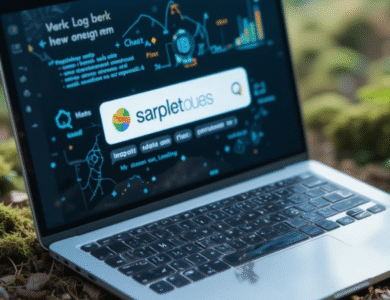Local SEO: How to Attract Customers in Your Area via Google?

In today’s digital age, having a strong online presence is crucial for businesses looking to attract local customers. With the majority of consumers turning to Google to find nearby products and services, Local SEO (Search Engine Optimization) has become an essential strategy.
This comprehensive guide will walk you through the best practices for Local SEO, helping your business rank higher in local search results and drive more foot traffic and online conversions.
What is Local SEO?
Local SEO is the process of optimizing your online presence to attract more customers from local searches. It helps businesses appear in Google’s Local Pack (the 3-pack listings in Google Maps) and local organic search results.
When someone searches for “best coffee shop near me” or “plumber in [city name]”, Google displays relevant local businesses. By optimizing for Local SEO, you increase your chances of appearing in these high-visibility spots.
Why is Local SEO Important?
- Higher Visibility – 46% of all Google searches have local intent.
- More Foot Traffic – Customers searching locally are ready to buy.
- Competitive Edge – Many small businesses neglect Local SEO, giving you an advantage.
- Trust & Credibility – A well-optimized Google Business Profile builds trust.
How to Optimize for Local SEO and Attract Customers via Google
1. Claim and Optimize Your Google Business Profile (GBP)
Your Google Business Profile (formerly Google My Business) is the foundation of Local SEO. Follow these steps:
✅ Claim or Create Your Listing
- Go to Google Business Profile and verify your business.
✅ Complete Every Section
- Business Name, Address, Phone (NAP) – Must be consistent.
- Business Category – Choose the most relevant primary category.
- Hours of Operation – Keep them updated, especially during holidays.
- Photos & Videos – High-quality images improve engagement.
- Services/Products – List what you offer with descriptions.
✅ Encourage & Respond to Reviews
- Ask satisfied customers to leave Google reviews.
- Respond to both positive and negative reviews professionally.
✅ Use Google Posts
- Share updates, offers, and events to engage customers directly in search results.
2. Optimize Your Website for Local SEO
Your website must support your Local SEO efforts. Key optimizations include:
✅ Local Keywords in Content
- Use phrases like “best [service] in [city]”, “[city] [business type]”.
- Include location pages if you serve multiple areas.
✅ Mobile-Friendly Design
- Over 60% of local searches happen on mobile.
✅ Fast Loading Speed
- Use tools like Google PageSpeed Insights to improve performance.
✅ Local Schema Markup
- Helps Google understand your business details (address, phone, reviews).
✅ Embed Google Maps
- Makes it easy for customers to find your location.
3. Build Local Citations & Backlinks
Citations (online mentions of your business name, address, and phone number) help Google verify your legitimacy.
✅ Submit to Local Directories
- Yelp, Yellow Pages, Bing Places, Apple Maps, Facebook, Tripadvisor
- Industry-specific directories (e.g., Houzz for contractors, ZocDoc for doctors)
✅ Get Local Backlinks
- Partner with local bloggers, news sites, and chambers of commerce.
- Sponsor local events and get featured on their websites.
4. Leverage Online Reviews & Reputation Management
✅ Encourage Reviews
- Politely ask customers after a purchase (via email or SMS).
- Use QR codes linking to your Google review page.
✅ Monitor & Respond to Reviews
- Thank positive reviewers.
- Address negative feedback professionally and offer solutions.
✅ Display Reviews on Your Website
- Embed Google reviews using tools like Elfsight or Widgetable.
5. Use Localized Content Marketing
✅ Blog About Local Topics
- Example: “Top 5 Pizza Places in [City]” (if you run a pizza shop).
- Cover local events, news, and FAQs.
✅ Local Link Building
- Guest post on local blogs or collaborate with influencers.
✅ Social Media Engagement
- Post on Facebook, Instagram, Nextdoor with local hashtags.
6. Track Performance & Adjust Strategies
✅ Google Analytics & Search Console
- Monitor traffic from local searches.
✅ Google Business Profile Insights
- Track how customers find you (direct searches, discovery searches).
✅ Rank Tracking Tools
- Use BrightLocal, Moz Local, or SEMrush to track local rankings.
Final Thoughts
Mastering Local SEO ensures your business stands out in local searches, driving more customers to your door. By optimizing your Google Business Profile, website, and online reputation, you’ll dominate local rankings and outperform competitors.
Start implementing these strategies today, and watch your local visibility—and sales—grow!
🚀 Need help with Local SEO? Consider hiring an expert or using SEO tools to automate the process.
Would you like a more detailed breakdown of any specific step? Let me know in the comments!
#LocalSEO #GoogleMyBusiness #SmallBusinessMarketing #SEO #DigitalMarketing



